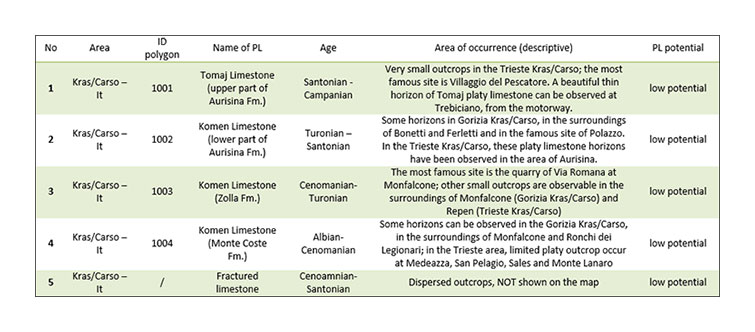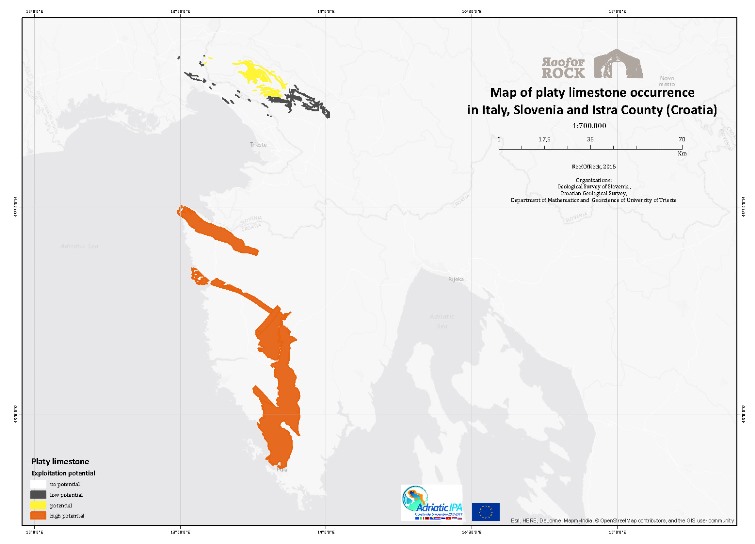Platy limestone – geologic definition and its use as a mineral commodity
Jernej Jež, Uroš Barudžija, Sara Biolchi, Stefano Devoto, Goran Glamuzina, Tvrtko Korbar
In the Italian part of the project study area, platy limestone has been observed as limited lenses and horizons within other thick-bedded limestone (Fig. 2.16 and Map 2.3). It occurs in almost the whole stratigraphic sequence of the carbonate platform and can be both Cretaceous and Paleogene in age. On the map of platy limestone occurrence (scale of 1:50,000), significant outcrops are presented as polygons, while very small local outcrops are presented as points/localities.
Platy limestone horizons occur within carbonate sequences of Monte Coste Limestone (Aptian-Cenomanian), Zolla Limestone (Upper Cenomanian-Turonian) and Aurisina Limestone formations (Coniacian-Santonian-Campanian) (Tab. 2.2). They may also locally occur in the Paleogene units such as Liburnia (Paleocene-Lower Eocene) and Alveolinid-Nummulitid Limestone (Lower Eocene) formations.
A thin platy limestone level defined in Slovenia in the Zolla/Repen Limestone Fm. has also been evidenced in limited outcrops in Italy in the surroundings of Monrupino and Prepotto (TS), Lisert and Monfalcone (GO). The lower part of the Aurisina Limestone presents a platy limestone unit called Komen Limestone by Cavin et al. (2000) and Jurkovšek et al. (1996). This unit has been observed in Italy between Aurisina and Prepotto and in the Gorizia Kras/Carso close to the border with Slovenia (Miccoli and Ferletti villages) and at Polazzo (Fogliano-Redipuglia). The upper part of the Aurisina Limestone displays another up to 40m thick layer of platy named Tomaj Limestone. It has been observed in Italy at Trebiciano, Santa Croce, Aurisina and at the Villaggio del Pescatore (Fig. 2.16 and Tab. 2.2) (see Appendix 2.1). The Paleocene Liburnia Fm. contains rare layers of platy limestone. Their thickness doesn’t exceed 0.5m.
A special type of limestone plates belongs to the so-called Fractured limestone. It is not a genuine platy limestone and its platy appearance is due to the dense systems of nearly parallel structural discontinuities. This facies is widespread throughout the territory and is well exposed in the superficial horizons of quarries as well as along road outcrops. Fractured platy limestone occurrences are not presented on the map.












